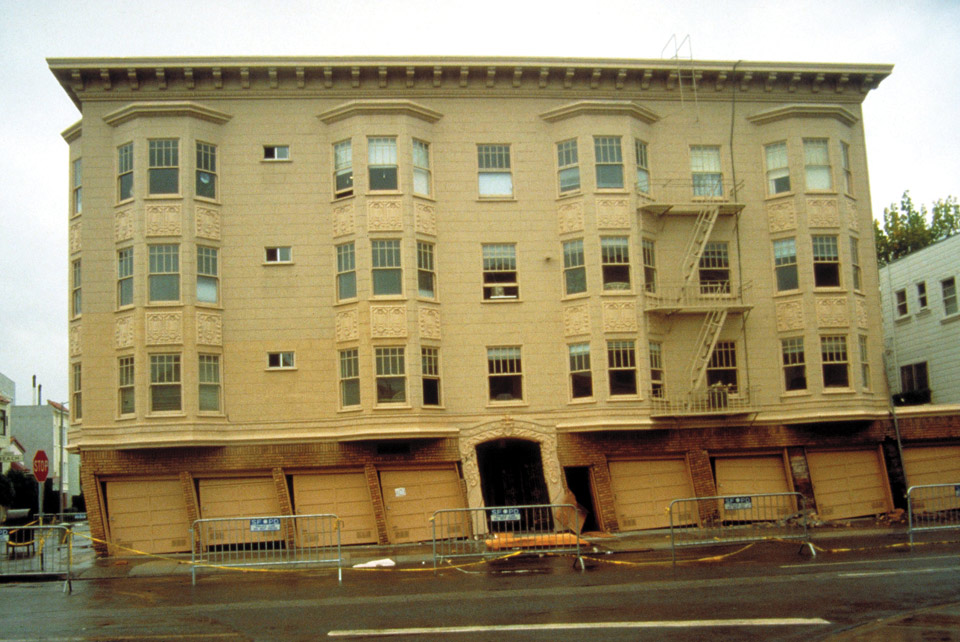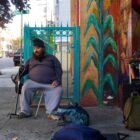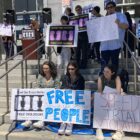@font-face {“Cambria”;
}@font-face {“Swift-Light”;
}p.MsoNormal, li.MsoNormal, div.MsoNormal { margin: 0in 0in 10pt; font-size: 12pt;”Times New Roman”; }p.BodyCopy-NoIndent, li.BodyCopy-NoIndent, div.BodyCopy-NoIndent { margin: 0in 0in 0.0001pt; line-height: 11pt; font-size: 8.5pt; color: black; }div.Section1 { page: Section1; }San Francisco’s piecemeal approach to seismic retrofitting took a big hit when voters rejected a $46 million bond to retrofit affordable housing and residential hotels. This was the third time in as many years that the city sought the ability to borrow money to fix structures that were most vulnerable to a major earthquake.
Advocates say this measure’s passage could saved the lives of some of the city’s most vulnerable residents. But seismic safety experts argue it was only a fraction of what is needed to prevent widespread building collapses when the next big quake strikes.
While this year’s bond measure, Proposition A, could have saved as many as 156 buildings, the city has identified at least another 2,700 similar structures that are not covered by any retrofit program.
The city has taken a piecemeal approach to seismic tune-ups for two decades. Since the 1989 Loma Prieta earthquake, city voters have given a go-ahead to 13 local and regional bond and tax measures. Two of these measures aim to repair San Francisco General Hospital and privately owned unreinforced concrete masonry buildings.
Some earthquake safety advocates see such a piece-by-piece approach as too laid back. However, this strategy is advised not only by the city’s financial planning staff in order to maintain a solid credit rating, but is also politically prudent, said Jason Elliott, a policy adviser to Mayor Gavin Newsom and also a key campaigner for Proposition A. Elliott said city officials try to put forward measures that “could get two-thirds on the ballot.”
With all the other financial challenges the city faces, “the piecemeal approach is what we’re stuck with,” said Chris Poland, a structural engineer and key player in the city’s seismic retrofitting initiatives.
The speed of retrofitting work, however, could pick up in 2011 if the newly elected Board of Supervisors makes some of the quake work mandatory.
Since early spring, officials have been preparing a new requirement that would apply to all soft-story buildings — wood-frame structures with large openings on the ground floor — built before 1973. City officials now estimate that the plan will not be ready for consideration for about six months. Still up for debate is whether there will be funds to help building owners comply.
The debate is timely: Seismologists predict that a 6.7-magnitude earthquake has a 63 percent chance of hitting the Bay Area in the next 30 years. Loma Prieta was magnitude 6.9, and it killed seven people in San Francisco and collapsed seven buildings in the Marina District, all of which were soft-story.
CONCRETE BUILDINGS ALSO IN DANGER
Nonductile concrete buildings also pose a serious quake risk and are costly to revamp. The Concrete Coalition, a volunteer group of engineers and planners, estimates that there are as many as 3,000 such buildings in San Francisco, both commercial and residential.
An advisory committee, called the Committee Action Plan for Seismic Safety, which reconstituted in 2008 after years of inactivity, has been pushing for an inventory of vulnerable structures the city should act on.
“I would have preferred a substantial amount more to cover private buildings that are rent controlled,” said Debra Walker, a member of the committee who also ran for supervisor in District Six this fall. “In some ways they’re more dangerous than wood-frame buildings. But there are less of them and they affect fewer people and businesses,” Walker said.
“It’s not enough,” said Sarah Karlinsky, deputy director of the San Francisco Planning and Urban Research Association. “We should be looking at nonductile concrete buildings, other SRO buildings with different vulnerabilities — all kinds of buildings,” she said, adding that Proposition A would have been a step in the right direction.
“If casualties are a concern, you should go after older concrete buildings,” said Lauren Samant, a consultant evaluating seismic safety for the city.
“There are a number of buildings that are considered to be quite dangerous,” said Stephen Mahin, professor of structural engineering at the University of California, Berkeley, and director of the Pacific Earthquake Engineering Research Center. “There are many levels of danger and soft-story buildings are in the top two or three.”
But in the financially strapped city, getting a green light for more funding is no easy feat. The Capital Planning Committee of the General Services Agency often discourages bond ideas that cost too much.
Proposition A, however, seemed affordable to the committee. “It doesn’t impact on the city’s ability to do future capital projects,” Elliott explained. But anything more would have been “more than the city can afford.”
Proposition A wasn’t the first program designed to toughen up the city’s buildings.
In 1992, a bond measure gave the city the authority to lend out hundreds of millions to fund retrofitting of unreinforced masonry buildings. Nearly two decades later, however, $270 million remains, and the mayor’s office says that tapping into that fund is complicated.
Though about 95 percent of the approximately 2,000 such masonry structures have been retrofitted, according to building inspection officials, the city was only able to find willing borrowers for a fraction of the $350 million that was available at that time.
The reason is that the loans offered by banks came with better terms than those the city offered.
Kevin Kitchingham, housing director of the Bernal Heights Neighborhood Center — an organization that owns buildings that might have benefited from the Proposition A loans — expressed disappointment that this $270 million fund has not been used.
“There was more money available for that bond issuance than the mayor would sign off on,” Kitchingham said. “We wanted to take the unspent bond authorization from the prior issuance and repurpose that money along with these funds.”
Repurposing the unreinforced masonry building bond would require sending two ballot measures to the voters. One would deauthorize its current use and another would reauthorize it to pay for seismic retrofits in other types of structures.
The city’s financial rating agencies have assumed the bond, authorized in 1992, will never be sold. Repurposing it might weaken the city’s bond rating.
VOLUNTARY MEASURES
The participation rate, however, has been minimal. Despite the offer of expedited permits and waived fees, only 14 building owners have applied for permits.
The Community Action Plan for Seismic Safety even went as far as recommending fines for noncompliance. The mayor’s office, however, is opposed to the fines.
Poland, chair of a mayoral committee preparing the mandatory ordinance, said the proposal was ready in September but got bogged down in debates about funding incentives.
The basis for the Proposition A effort was a report published by the Community Action Plan for Seismic Safety in February 2009. It identified risks and issued recommendations regarding soft-story buildings. The city prioritized residential hotels in part because they house so many people.
Poland said that because the buildings damaged in the Loma Prieta earthquake were all soft-story structures, people are more aware of their dangers: “Whenever there’s an earthquake and a particular building is damaged, it causes the public to be concerned and for us to focus on that.”
Identifying which kinds of danger the city should try to avoid is not straightforward.
“If your priority is to make sure people aren’t thrown out of their houses after an earthquake, then these wood-frame soft-story buildings are more important,” said Samant, a project manager for the community action plan and consultant for the Applied Technology Council. “Not only those covered by Prop. A, but also smaller ones with three or four units.”
Samant explained that the focus on buildings with only five or more units is somewhat arbitrary, as the number of units in a building says little about its size or risk of collapse.
MORE PRESSURE FOR REFORM
Despite its numerous recommendations, the Community Action Plan has little ability to act. As an advisory group, its recommendations on legislation and programs are passed on to the Department of Building Inspection and politicians, where the fate of these programs is decided.
“Ultimately it’s the job of the city, the Board of Supervisors and the mayor to move forward with these recommendations,” Walker said.
Three more reports will be published by the Community Action Plan for Seismic Safety before the end of the year. These include a detailed study of what is likely to happen in San Francisco in the event of a major earthquake, a report clarifying which buildings will need to be repaired and retrofitted after an earthquake and a list of risk-mitigation recommendations for the city.
Though the city contracts for the Community Action Plan are due to expire soon, the advisory committee, composed of volunteers, will continue its work.
“Even without money from the city,” Poland said, “there’s a strong army of volunteers interested in doing this for San Francisco.”
A version of this article was published in the fall 2010 edition of the San Francisco Public Press newspaper. Read select stories online, or buy a copy.










